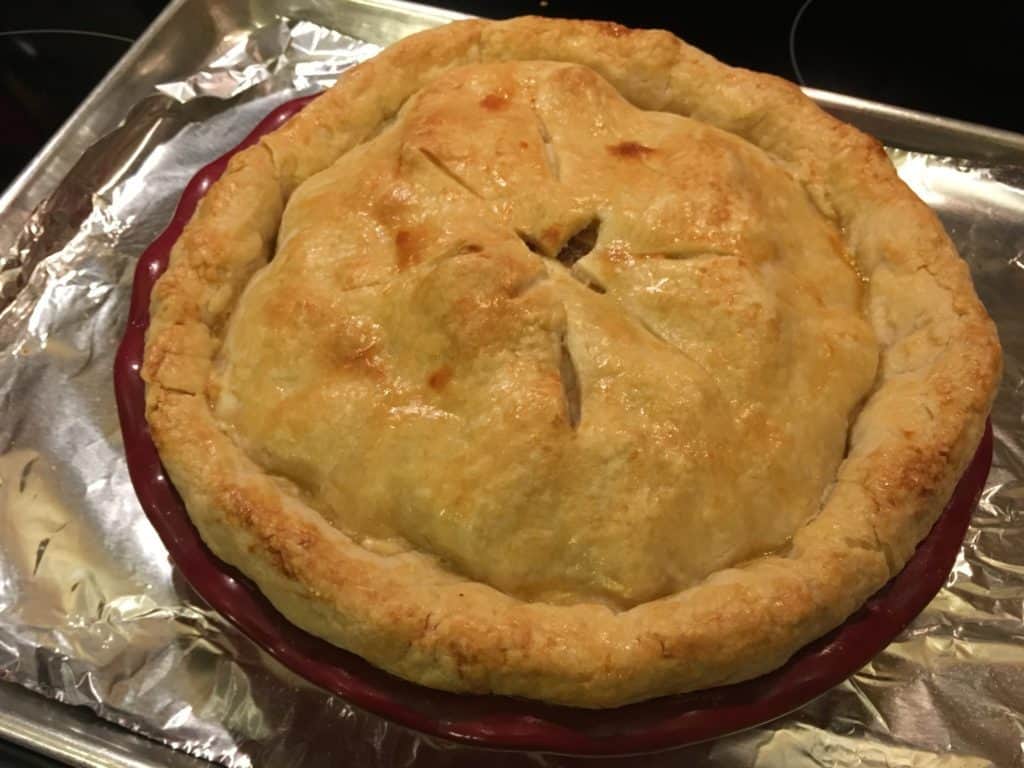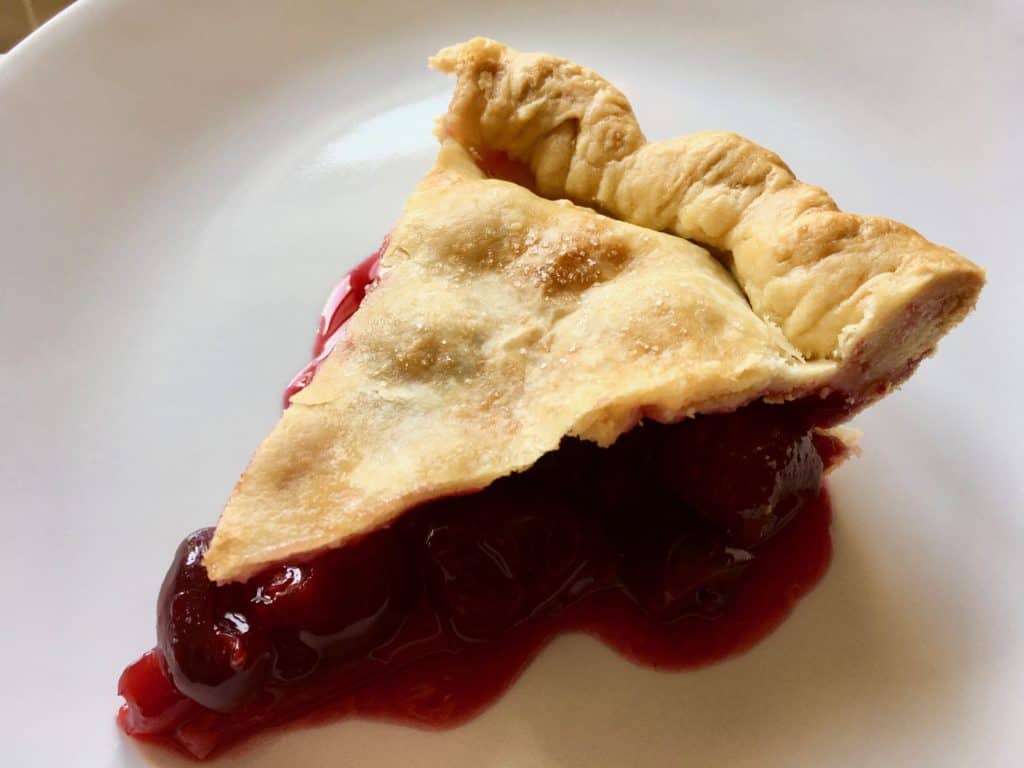
Home cooking doesn’t have to be daunting or overly time consuming. We don’t have a magic formula to instantly become a gourmet chef, but we have found a few tried and true ways to stay motivated and steadily increase our skills. With some time and patience you to can become a sizzling success.
While this isn’t an exhaustive list, we’re going to break down our process from recipe selection to creation so that you can become a success in the kitchen too.
Get Motivated: How to Cook More Often
1. Find your inspiration with pictures:
When you want to step out and try something new, how do you figure out what to cook? There are so many recipes floating around and so little time to try them all. If you’re feeling stuck, the simple answer is to go with your gut, using pictures as your cooking catalyst. Gazing at a picture of a mouth-watering meal gives you the initial craving that’s going to get you in the kitchen and keep you there.
Here’s why the pictures are so important:
- Recipes without pictures are easily forgotten and don’t hold your attention. Don’t give yourself a reason to put off making a new recipe. Entice yourself with a juicy picture. When starting out, skip cookbooks that don’t have many pictures. They’re more likely to collect dust than not.
- Pictures give you an immediate indicator of whether the recipe may be good or not – If it looks good enough to eat, make it. You’re going to be investing time and energy into recipes, so by starting with something that has the promise of turning out well, you can increase your chances of it turning out this way.
- Pictures give you a target to aim at. Without a picture, you don’t get an idea of how it should turn out or to measure your efforts by. On that note, you should take a picture of your efforts no matter how it turns out. You’ll want to review your prior attempts at a later point to see how far you have come.
Keep in mind:
- As you get farther along, you may want to experiment with recipes in older cookbooks where there may be little to no photography. You’ll be able to get a sense of whether a recipe will work out well from perusing the ingredients and cooking methods and reading between the lines of the recipe to see whether or not it is worth your time.
- Sometimes pictures lie. The recipe could turn out looking exactly like the picture, but still taste mediocre. While this doesn’t happen too often, you can increase your chances of a good outcome with our recipe selection suggestions.
2. Determine your purpose for cooking
Cooking for Nostalgia’s Sake
The tastes and smells of the past evoke strong memories. In a way, home cooking is an inexpensive form of travel, time travel that is. You can use these good feelings of meals gone by as a motivating force to relive fond experiences whenever you want.
Maybe you ate something on vacation that isn’t available where you live, or your favorite restaurant went out of business and you want to know how to recreate what you ate there. The good news is that you can make your own version of the dish again and again.
Cooking to improve particular skills
The more you cook, the more you’ll collect skills that build on one another. Identifying a skill you want to master will direct what you cook. To get started, a lot of basic knife skills can be obtained with recipes that utilize lots of vegetables. Buy inexpensive vegetables in bulk like onions, carrots and potatoes and practice chopping, dicing, slicing, cubing, mincing and julienning.
Then you could take those same vegetables and practice sauteeing, caramelizing, braising or pickling, etc. There’s really no limit to what you can learn!
Cooking with a piece of equipment you want to learn to use

Kitchen equipment, especially of the electric sort, is supposed to save you time and hassle. However, we aren’t always utilizing the full capabilities of these items. Now’s the time to dust it off and see what all it can do. Take inventory of your kitchen and ask yourself:
- How could I expand the use of equipment I already own? For example, we have a Vitamix that we predominantly use for smoothies, but have branched out to using for soups. It can also produce sauces, dressings, nut butters and a plethora of other things. We enjoy finding recipes where we can use one machine for multiple uses.
- Am I really ever going to use this item? Maybe your kitchen is cluttered with “unitaskers” that really don’t have much of a purpose. Alton Brown doesn’t like these at all! You can narrow down what you want to focus on by eliminating these from your kitchen.
Cooking with an ingredient you want to use
We all have leftover ingredients in the cabinets that were purchased as a one-off need for a recipe. For us, it seems to be flours of various types (coconut, almond, tapioca, etc..).
Instead of letting them expire, start pulling out the ingredients you already have and search for recipes with those ingredients. You’ll simultaneously clean out your cupboards and create things you never thought to make.

Cooking for family and friends
Cooking for the people you know and love is an excellent way to experiment and showcase what you’ve made. We live in an apartment that doesn’t allow us to use barbecue grills, but we didn’t let that stop us. It’s a great excuse to have a barbecue with the parents, who just happen to have a Weber charcoal grill waiting to be fired up.
We also enjoy taking on bigger home cooking projects for special occasions. Each year is another opportunity to make a new birthday cake or new side dishes to accompany Thanksgiving dinner.

How to find great recipes to cook
When a recipe doesn’t turn out as expected, who is to blame? Often, it’s nothing you did wrong, it’s simply a bad recipe.
“But I got it from my favorite celebrity chef’s website, they must know what they’re doing. Why is it such a flop?”, you may think.
Chefs are likely not checking over this for accuracy. Someone running their site simply copy and pasted it up there.
So how do you know you’re starting with a good recipe? Here are some tips to help you avoid this frustration.
1. Start with recipes from trusted sources
This seems obvious, but you’re going to have a lot more successful outcomes if you use recipes from consistent sources who have fully vetted their recipes.
2. Focus on simple recipes first
It’s important not to get overwhelmed and gradually work your way to more difficult recipes. When beginning, the best recipes will help you work on the fundamentals with simple recipes that use fewer ingredients, involve fewer steps and minimal equipment such as Jonathan’s Go-To Guacamole .
3. Use other food blogs and cooking product websites
We gain a lot of inspiration from other bloggers who have been on the scene for a long time (i.e. around 10 years). The overwhelming majority of their recipes are winners. Here are some excellent sites to check out:
We’ve also had great results using recipes from food product sites such as King Arthur . They’re kind of an authority on baking and offer great flours and hard to find baking ingredients. Additionally, they offer bake-alongs and other inspiring challenges to keep you motivated.
4. Video Recipes
If there’s a video that accompanies a written recipe, you’re usually able to see the entire process from start to finish, and sometimes you’ll find it differs from the written recipe. This could make a big difference in the outcome. We’ve been able to determine a lot of missteps by comparing the two versions and taking good notes.
Also, a lot of times it helps to read the comments. If it’s a popular recipe the troubleshooting is often done for you by others. This may seem like a big hassle, but understanding why something didn’t work out will set you up for success for future recipes where similar techniques are applied.
Random internet searches are hit or miss, and mostly miss, so we don’t suggest going down that rabbit hole when beginning. You’ll save a lot of time and frustration by starting with recipes that work from the get go. If you must, use google image searches to hunt down recipes with a good picture of what you’re making. These usually are more accurate than plain text, but not always.
How to plan for making your next great dish
Cooking takes some level of planning no matter how small the recipe. Taking some time to carefully plan it out will make the whole process go smoothly.
Here are some things to think about before taking on a recipe:
1. Read through the recipe thoroughly
When making a new recipe for the very first time, we always have to remind ourselves to read through it in its entirety several times over before starting. Not doing so has resulted in many last minute calls for pizza delivery. That’s because we didn’t account for the time it would take us to complete several steps ( e.g. marinate the steak for at least 4 hours) . The meal we intended to eat at 6pm will now be ready at 11pm. That’s a recipe to be hangry.
Carefully reading a recipe will ensure that you don’t miss an ingredient, a piece of needed equipment or a crucial step that involves letting something simmer for 3 hours instead of the 20 minutes that you’d assumed it would take.
2. Timing
Again, timing is everything. Estimate the time it takes to make the recipe if it’s not already stated, and then work backwards. Decide when you’d like to eat. Is it possible to make everything the same day, or would you be better off making one part a day or two before you need it? You can tackle some pretty complicated recipes this way by simply giving yourself more time and completing it in stages.
3. What equipment is needed?
Make sure you don’t need something very specific for that recipe such as a special sized cake pan that you’ll need to order ahead on Amazon. We’ve delayed making recipes for long periods until we were ready to make these kind of purchases. In fact, we have been talking about making this wonderful apricot and pistachio souffle for years but still haven’t pulled the trigger on buying the right sized souffle dish. This may be the year.
4. Ingredients
Look at the ingredients required. You can break this down into 3 categories.
What you already have in your home (your staples).
You’re going to be building staples in your house you’ll be using over and over, so don’t be intimidated by a long list of ingredients. You’ll be racking up spices, herbs and sauces that will serve you over the course of many meals.
What you can buy at the grocery store.
In many cases, gathering your ingredients isn’t going to be a one stop shop. We sometimes have to go to a few places to get everything, but we choose stores that are all within close proximity to each other. We’re not big on couponing so a typical shopping trip usually goes in this order to get everything while spending the least time and money:
- Discount Grocery (Lidl, Aldi, Costco, International Grocery Store) : Starting here we can usually save the most on produce, value packs of meat and other staples.
- Supermarket (Kroger, Publix, Walmart) We can usually fill in most of the gaps here. If we cannot find everything we’re looking for at this stage we either decide to substitute ingredients or move on to a specialty store.
- Specialty Grocery (Whole Foods Market, Fresh Market, local butchers and seafood markets) We save this for last because it’s generally pricier. Go here when you need very specific items like specialty cuts of meat, wine, cheese, and produce.
What you’ll have to order online.
When all else fails and you have the luxury of waiting a day or two, go online. Amazon generally has you covered, but by no means carries all ingredients. Here are some of our favorite sources for completing your shopping list:
Making recipes: All you need to know
1. Prepping ingredients for cooking

When Jonathan was working at a cookware store, a customer told him he was in the market for a frying pan that “wouldn’t get away” from him. When pressed about what he meant, the customer had permanently scorched his pan by focusing his attention elsewhere.
Maybe he had an important phone call and walked away, but it sounded as if this was a regular occurence. The customer’s solution was to get a pan that was basically fireproof, or at least didn’t heat up quite as fast.
Rather than looking for a mythical indestructible pan that prevents house fires, the customer probably just needed to prep his ingredients before turning on the stove.
Prepping beforehand allows you to slow down the process and concentrate on what you’re doing. If you have something frying in a pan, and you take your eyes off of it to go cut up several other ingredients, it can get away from you. Doing all your prep before turning on the burner will save you lots of frustration and money. It may seem like it takes a lot of time, but the cooking goes rather quickly when everything is all cut up and ready to go.
2. Evaluate and Critique your progress.
Cooking, like anything creative, takes practice. Rather than getting overwhelmed with feeling like you’ll never get better at it, embrace the process of practice.
In the book The Practicing Mind by Thomas M. Sterner, the process of practice is broken down into the DOC method: Do, Observe, and Correct.
It’s quite simple. After you complete a recipe, you’ve done the “Do” part of this method.
Next, you simply make an observation about what you cooked. Did you like it? If not, what would you change the next time? Instead of judging yourself harshly, you can make some simple adjustments and try again. Just repeat the DOC method until you feel like you’ve corrected everything and before you know it you’ve improved by leaps and bounds.


We highly recommend this book because you can apply it to just about any endeavor in which you want to acquire skills.
Don’t be afraid to make mistakes and have imperfect results. One of the most important pieces of advice Jill gives to her ESL students is not to wait until their English is perfect before attempting to speak it. Using the little English they know over and over will help them learn faster.
When cooking, you’re rarely going to make a recipe perfect the first time around, so don’t hold back if it’s not Facebook worthy. On that note, take a picture each time you complete a recipe. When you make a recipe multiple times, you’ll be able to see the difference in how far you’ve come.
Practice really does make perfect.

[…] “I want to get better at cooking, but my schedule doesn’t allow it.” […]